What's New In Robotics This Week - 16.02.2018

Posted on Feb 16, 2018 7:00 AM. 15 min read time
-Manufacturing & cobot roundup
-The praying mantis & robot vision
-Intel's drone spectacular
-DNA-nanobots beat tumor
-Hold that door
-And much more!
Manufacturing & Cobot Roundup
Canadian firm Engineering Services Inc's new C-15 CanArm cobot model was profiled in Robotics & Automation News this week, as the company bids to "capitalise on collaborative robot market growth":
C-15, one of the Canarm series industrial robotic arms, is composed of the patented integrated two-joint module and the motion control system with independent IPR. Fully integrated with different technologies for safe human-robot collaboration, it can be used in labor-intensive assemble lines, precision machining, grinding, polishing, welding, machine tending, material handling, etc.
Radiall has deployed cobots that "that reduce musculoskeletal issues and improve productivity, and redirect our operators toward high added-value tasks"...
Kindred.ai is employing pilots to improve production line robots' grasping and handling skills. Via MIT Technology Review:
Caption: Kindred’s 'Sort' warehouse robot.
Kindred now employs six pilots, each of which tele-operate robots in warehouses around North America. The team is led by software engineer Chris Hayes, who ensures a smooth sharing of duties between pilots and robots—people mainly control the robots’ gripping functions, while tasks like sorting the objects and positioning the arm for the next item are automated. While the pilots work, each movement is recorded and used to train Kindred’s machine learning software on the best ways to grip. The pilots are, in essence, teaching the bots how to work on their own.
Researchers at the Surgical Robotics Lab, University of Twente, Netherlands, used two cobots from Universal Robotics (the UR3 and the UR5) to demonstrate "Flexible Needle Steering in Moving Biological Tissue with Motion Compensation using Ultrasound and Force Feedback"...
Meanwhile, Makerbot's 3d-printer was awarded "Employee of the Year" at KUKA for "tireless performance in early-stage functional prototyping"; Packaging Digest looked at some of the cobots working in medical packaging; and Wired took a long look at China's transition "from imitation to innovation" in 'How China became a tech superpower.'
German researchers are working on a "robot-assisted shotcrete technology for generative manufacturing of complex concrete structures without formwork." The new process is dubbed "Shotcrete 3D printing" (SC3DP)...
A piece in SHD Logisitics shared some excellent advice for those thinking about cobot risk assessments:
Those with only a limited knowledge of cobots may refer to them as ‘fenceless robots’ implying that they are safe. However, if you are manufacturing knives with a fenceless robot, is an operator working nearby any safer because the robot is moving slowly? It’s all about evaluating the complete system.
Before investing in a cobot, conduct an appropriate risk assessment. There are certified experts in robotics to handle these risk assessments to ensure that the robot, the application and operators interact safely. Getting this chemistry right brings the dual benefits of a safe place to work and improved productivity.
Find out more about performing an effective cobot risk assessment with Robotiq's ISO/TS 15066 Explained.
FZI showed off a system for collaborative screw assembly...
Meanwhile, a new report predicts that the AI market will grow from USD 3.49 Billion in 2018 to USD 12.36 Billion by 2023, at a CAGR of 28.78%; cobots are set to become the fastest growing robot sector, says Robotics & Automation News; and components and government initiatives led the way in early February's robot investments, according to Robotics Business Review.
PRE-TEC is using QC-76 Robotic Tool Changers from ATI Industrial Automation in a dual 'Master-and-Tool configuration' for protecting wood products during transit...
Elsewhere, Automation World asked "Are you ready for Operator 4.0?"; Chinese officials have promised to make further efforts to enhance high-tech industry in the country; and Automoblog reported on how a Ford manufacturing plant in Ketucky introduced automation --including cobots-- in order to meet a surge in demand.
Northwestern University mechanical engineering professor Todd Murphey and his team are working on ways to make robotic assistance as seamless as "humanly" possible...
Car maker Volkswagen is developing "dynamic safety zones" that could one day be used to enable human-robot collaboration with industrial robots...
The praying mantis & robot vision
In a "spectacular" finding, a team from the Institute of Neuroscience at Newcastle University, UK, has discovered that the praying mantis uses a previously unknown method to build 3D images of their surroundings. The discovery could lead to improved low-power consumption robot vision systems.
Via Newcastle University:
Fellow team-member from the School of Engineering, Dr Ghaith Tarawneh adds, “Many robots use stereo vision to help them navigate, but this is usually based on complex human stereo. Since insect brains are so tiny, their form of stereo vision can’t require much computer processing. This means it could find useful applications in low-power autonomous robots.”
Meanwhile, at the Winter Olympics in South Korea, robots have been skiing, cleaning, helping with directions, creating art, and mesmerizing fish fans...
However, Intel's Shooting Star drones --all 1,218 of them-- stole the show with a stunning display that broke Intel's previous record for the largest number of synchronized drones "airborne simultaneously"...
DNA-nanobots beat tumor
In recent weeks we've encountered DNA-bots that move at dizzying speeds and a new system for managing swarms of DNA-bots.
This week, in a world-first (and a major advancement in nanomedicine), researchers from the US and China have successfully programmed DNA-bots to shrink tumors by cutting off their blood supply. The nanobots generated tumor tissue damage within 24 hours while having no effect on healthy tissues.
 Caption: artist's impression of the DNA-nanorobot at work.
Caption: artist's impression of the DNA-nanorobot at work.
“We have developed the first fully autonomous, DNA robotic system for a very precise drug design and targeted cancer therapy,” said Hao Yan, director of the ASU Biodesign Institute’s Center for Molecular Design and Biomimetics and the Milton Glick Professor in the School of Molecular Sciences.
“Moreover, this technology is a strategy that can be used for many types of cancer, since all solid tumor-feeding blood vessels are essentially the same,” Yan said.
The team's work was published in the latest issue of Nature Biotechnology.
Elsewhere, researchers at the University of Boulder have created a malleable “electronic skin”, which is also able to self-heal if it’s damaged.
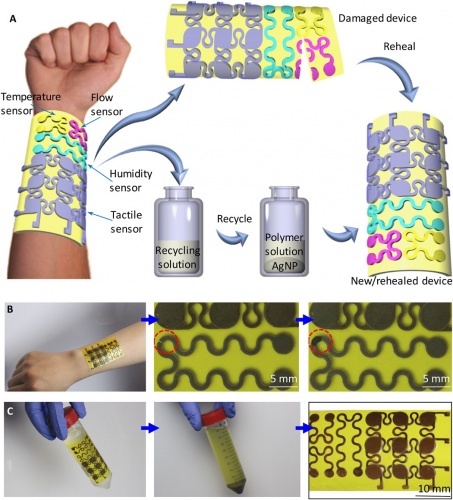 Credit: Jianliang Xiao / University of Colorado Boulder
Credit: Jianliang Xiao / University of Colorado Boulder
Alphr reports:
“The e-skin can be applied to any place that requires sensation of the environment, such as prosthetics, smart textiles, space suits, and robotics,” [Co-author of the study, Jianliang Xiao] explains. “It could also provide health monitoring to structures and human bodies.
“For robotics, it might not be very necessary to integrate e-skins with industrial robots to provide sensing capabilities at this point. But for robots that physically interact with humans, e-skins are very important to provide sensing and feedback of touching, holding and monitoring.
“Imagine a robot that can gently hold a baby, touch him/her like the parents do, and feel the temperature increase if the baby gets a fever,” he adds.
We recently featured research about a drone design that makes a virtue of drones bumping into obstacles.
Well, a similar principle is at work this week in new research from a team comprising experts from University of California, Berkeley (UCB), John Hopkins, Harvard University, and Pennsylvania State University, showing that cockroach-inspired robot designs can offer advantages, even if it means robots bumping their 'heads' every now and then:
The researchers explain that cockroaches are capable of overcoming obstacles in the fastest possible way. Instead of working to avoid obstacles, they just bump into them while moving fast, taking advantage of their robust bodies.
“Cockroaches running at over 1 m [meter] or 50 body lengths per second transition from the floor to a vertical wall within 75 ms [millisecond] by using their head like an automobile bumper, mechanically mediating the manoeuvre,” the study notes. What they propose is a design similar to a cockroach, and they demonstrated this using a palm-sized, legged robot.
Hold that door
The viral robotics video of the week came from Boston Dynamics and shows two of the firm's SpotMini robots collaborating to open a door and pass through. The way the bot holds the door open with one of its legs is quite mesmerizing...
The SpotMini is "even more impressive than it looks," says Slate:
Assuming the robot isn’t completely remote controlled by an operator with exceptional motor skills, Spot probably had to be able to “see” the door handle, using some array of cameras and sensors, so it would know exactly where to place its claw and subsequently its foot to prop open the door, which shows a keen understanding of what its body is capable of. Most robots can’t do this; this one can.
Elsewhere, Miso Robotics raised US$10 million to bring its burger-flipping robot to more restaurants; Independent Online argued that self-driving delivery vans are likely to arrive on our streets before self-driving cars; and as Valentine's Day passes for another year, a new survey revealed that one third of British people believe that mobile tech and AI will help improve their relationships, helping to ease rows and find new lovers.
To what extent should AI be permitted to replace the human element in romantic relationships? In what ways will future generations use AI to support and enhance romantic relationships? Will anxious lovers in the future wonder: 'Does my romantic partner love me or my AI?'
Those questions will be answered in time. For now, we humans have little to worry about.
After all, no AI could write a poem as touching as this:
Roses are red,
Violets are blue,
And I'll be back next week with more news from the world of robotics.
(Until then, enjoy these videos and links!)
Teaching assistant robots will reinvent academia (Times Higher Education)
Why robotics needs a radical reboot (Laboratory News)
CommonSense Robotics raises $20M for robotics tech for online grocery fulfilment (TechCrunch)
The designers helping us embrace robots (BBC)
Dash Robotics raises $2.7 Million to focus on building long-term partnerships (PRNewswire)
Robots and workers of the world, unite! (PhysOrg)
Making precision robotics a reality (Engineer Live)
Mazor CEO: Robotics is here to stay (MDDI Online)
Smart Swarms Seek New Ways to Cooperate (Quanta)
Robots and computers offer new ways to study sea life (Cosmos)

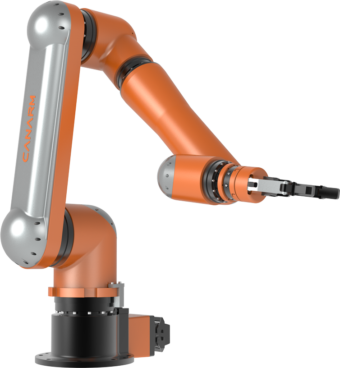
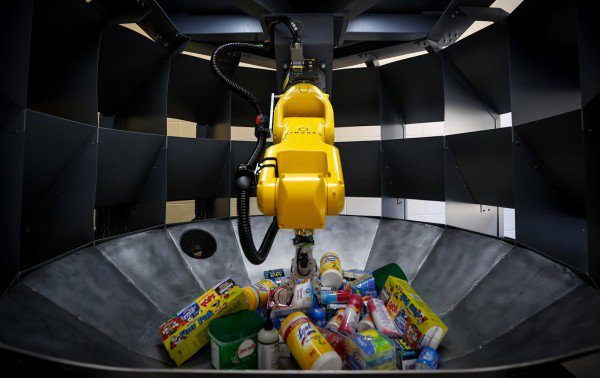

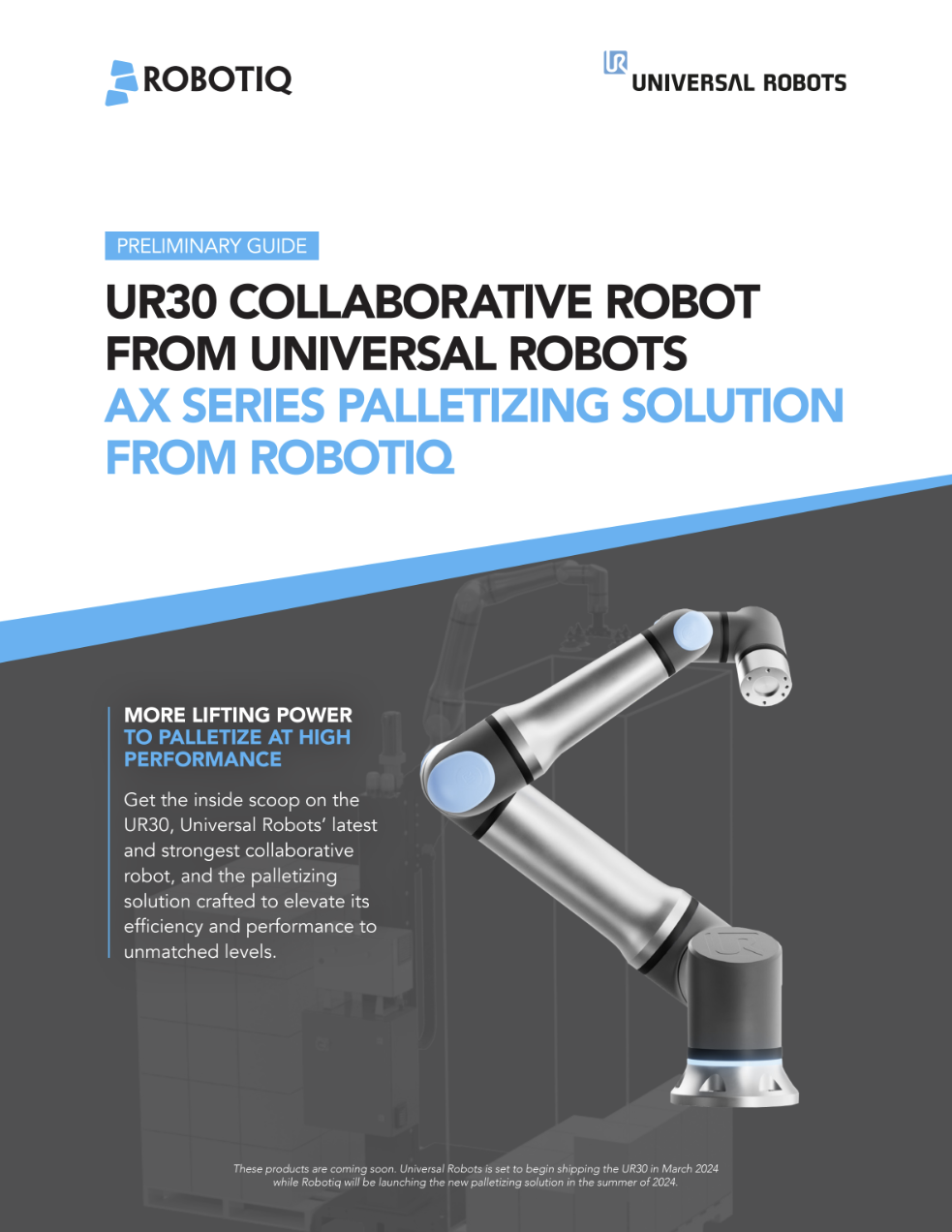



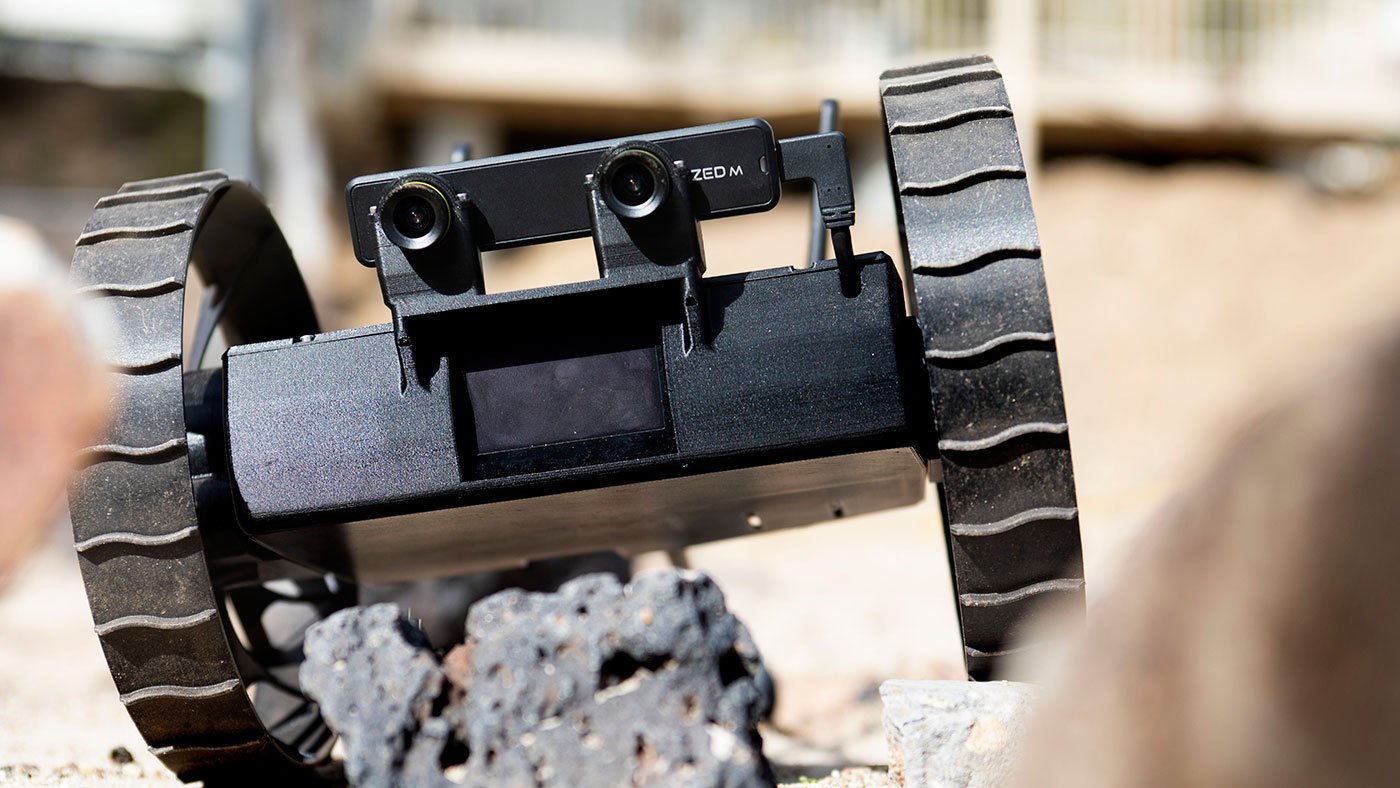

Leave a comment